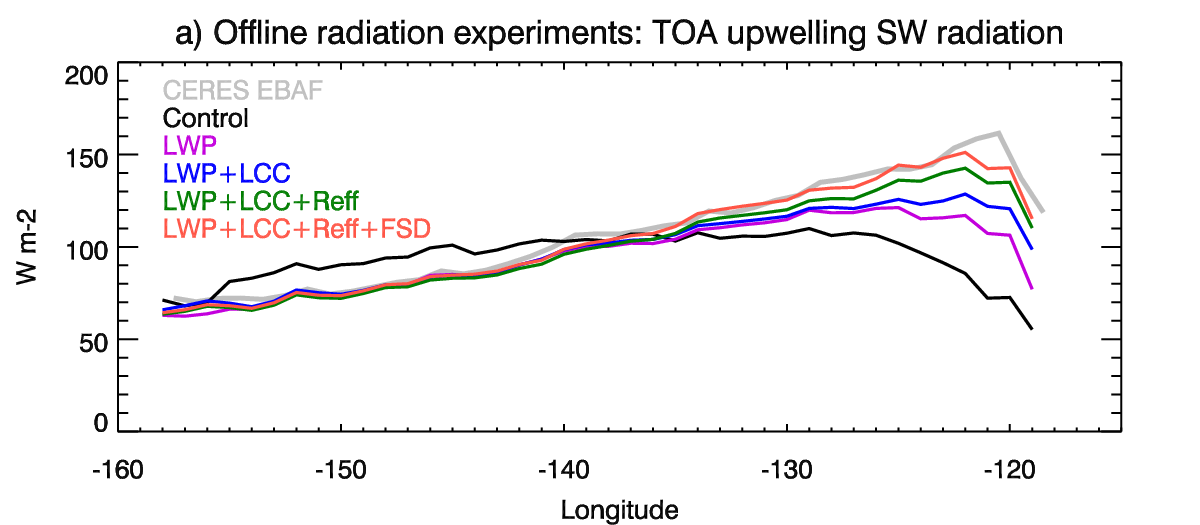Understanding systematic radiation errors in global models
Submitter:
Ahlgrimm, Maike — Deutscher Wetterdienst
Area of research:
Radiation Processes
Journal Reference:
Science
Low clouds over ocean can cause large solar radiation errors in global atmospheric models. This study uses observations and a global weather forecast model to gain a better understanding of which aspects of the modeled clouds need to be improved in order to significantly reduce the radiation errors.
Impact
This study demonstrates how observations can be used to identify sources of a global model radiation error, and quantify their individual contributions to the overall error. This method can be applied to other global models, many of which share similar radiation errors over the ocean, to help guide and prioritise model development efforts.
Summary
Many global models have systematic shortwave radiation errors over areas covered by marine boundary-layer clouds. Typically, stratocumulus regions are not reflective enough, while trade cumulus areas reflect too much sunlight back to space. In this study, a combination of ship-based observations from the ARM MAGIC campaign, together with satellite-based observations, are used to identify cloud properties that are modeled incorrectly in the ECMWF global numerical weather prediction model. An offline version of the radiative transfer calculations is then used to test how correcting the cloud property errors would affect the shortwave radiation. The results show that by far the most important aspect to improve in the trade cumulus regime is an overestimate of the amount of liquid water in the clouds. In the stratocumulus regime, a longer list of cloud properties (liquid water path, cloud cover, cloud droplet effective radius, cloud heterogeneity) needs to be addressed to improve the radiation error.


